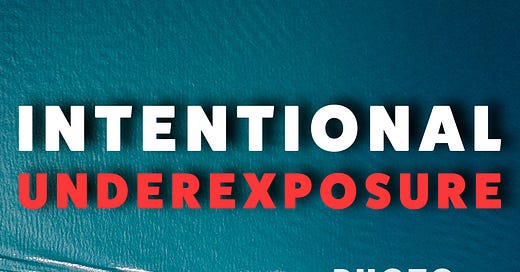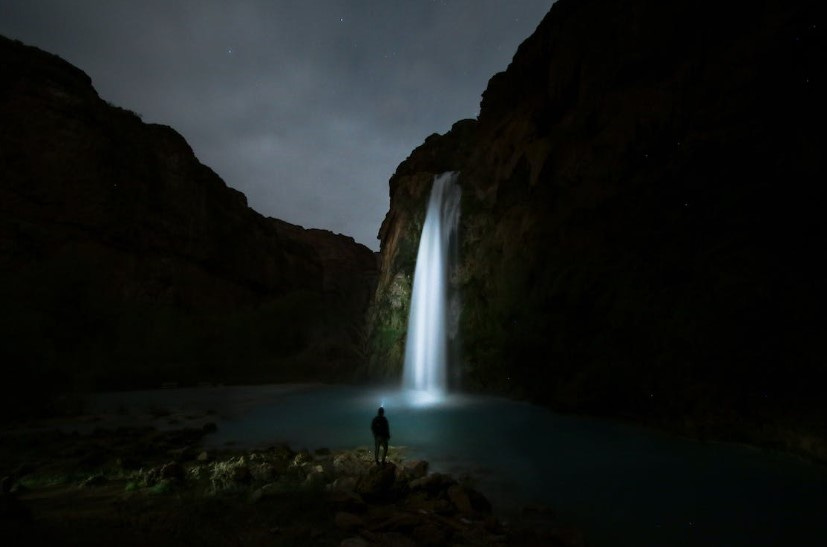Mastering Intentional Underexposure in Your Digital Photography
Hello fellow photography enthusiasts, and welcome back to another captivating edition of The Photo Cultivator newsletter!
Today, we embark on an exciting journey into the realm of intentional underexposure—a powerful technique that can add depth, drama, and creativity to your photographic endeavors.
The Art of Intentional Underexposure
First things first, what exactly is intentional underexposure?
It's a deliberate choice to capture an image with less light than the camera's meter suggests as the "optimal" exposure.
This technique can be a game-changer, allowing you to craft images that stand out and leave a lasting impression.
But how does it work, and when should you use it?
Crafting Mood and Atmosphere
One of the most compelling reasons to explore intentional underexposure is its ability to set the mood and create a unique atmosphere in your photographs.
As you bring more shadows and allow certain areas to remain dark, you can evoke a sense of mystery, suspense, or nostalgia.
It's a bit like painting with light and darkness, giving your photos an emotional depth that resonates with viewers.
Preserving Those Precious Highlights
Another advantage of underexposing your shots is the preservation of highlights.
These are the brightest parts of your image, often found in areas like the sky, reflections, or direct light sources.
In standard exposure, these highlights can easily become overexposed and lose detail.
However, intentional underexposure can help you retain those essential highlights, ensuring that your photo doesn't suffer from "blown-out" areas.
The Flexibility of RAW Format
Shooting in RAW format is a game-changer when it comes to intentional underexposure.
Unlike JPEG, RAW files capture a wealth of information, allowing you to make precise adjustments during post-processing.
This means you have more room to fine-tune the exposure, recover details from the shadows, and enhance the overall quality of your image.
It's like having a virtual darkroom at your disposal.
Exposing to the Right (ETTR)
While we're on the topic of exposure, let's talk about ETTR—Expose to the Right.
This technique involves pushing your exposure to the brightest possible level without overexposing highlights.
Why?
Because when you maximize exposure while avoiding clipping, you can achieve images with less visible noise and more data to work with during editing.
Balancing Shadows and Highlights
A key consideration when employing intentional underexposure is achieving a balance between shadows and highlights.
While it's exciting to play with shadows, remember that you still want your subject to be visible and the composition to shine.
Strive for a harmonious blend that enhances your narrative rather than obscuring it.
Subject and Composition Matters
Keep in mind that not every photo is suited for intentional underexposure.
It's essential to consider your subject matter and composition carefully.
This technique shines when it complements the narrative or conveys the desired emotion.
Experimentation is encouraged, but the results should resonate with your artistic vision.
Benefits and Commercial Considerations
Intentional underexposure isn't just about artistic expression—it can also have practical benefits.
For example, it can help you create compelling silhouettes, emphasize specific elements, or capture moody, low-key images.
However, it's worth noting that these images may not always be suitable for commercial purposes, where a broader audience may prefer traditionally exposed photos.
Understanding Technical Rules Before Breaking Them
Some members of our photography community have emphasized the importance of understanding the technical rules of photography before intentionally breaking them for artistic effect.
Knowing why you're underexposing and when to do it can lead to better results.
Exposure and Noise Debates
There is an ongoing debate about the relationship between exposure, ISO, and noise.
While some photographers argue that maximizing exposure (while avoiding clipping) can result in less visible noise in the final image, others emphasize the importance of shooting at the correct ISO to begin with to minimize noise.
And that’s it
Intentional underexposure is a powerful tool in the photographer's toolbox.
It allows you to craft images with mood, atmosphere, and preserved highlights.
With the flexibility of shooting in RAW format and the technique of ETTR, you can boost your creativity while maintaining image quality.
Remember, photography is an art form, and your unique perspective is what sets your work apart.
So, don't be afraid to embrace the shadows, balance the highlights, and explore the magic of intentional underexposure.
Your next masterpiece could be just a click away.
Until our next edition, keep clicking and capturing those extraordinary moments through your lens!
Stay tuned for more captivating discussions and insights in my future newsletters.
Happy shooting!
Hakan.




